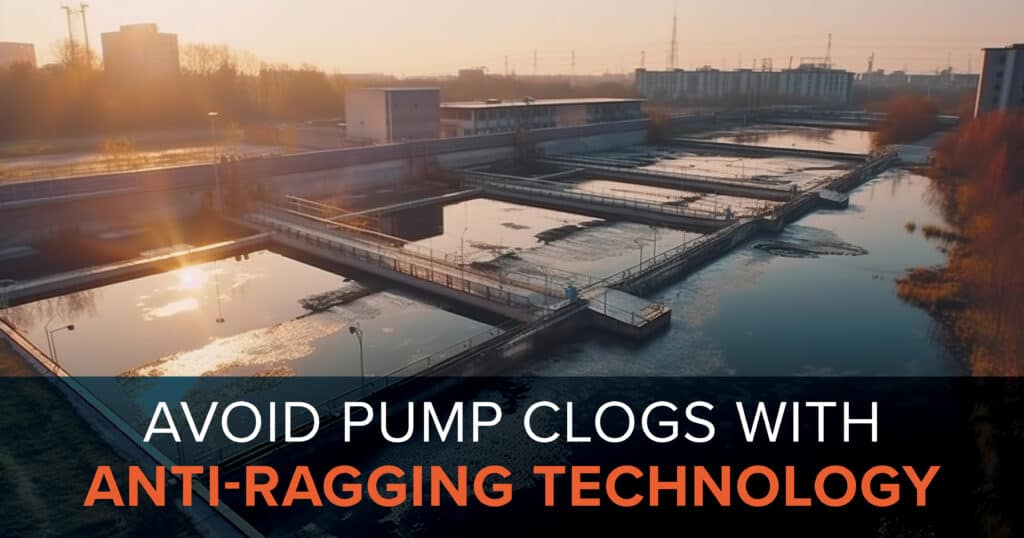Ragging and clogging are common problems in wastewater management. Sludge, debris, and non-flushable items can gather and form into rag balls, which can clog pipes, pumps, and filter screens. This causes numerous problems. Water flow can be greatly restricted or stopped altogether in critical lift stations. System performance can suffer, and equipment can experience significant damage. Flooding can occur to present both safety and environmental concerns, especially during storm events.
Upgrading with Anti-Ragging Technology
Fortunately, anti-ragging (or “deragging”) technology exists to prevent ragging in wastewater treatment facilities. Many lift station managers are upgrading older pump infrastructures with new equipment and modern anti-ragging solutions. Most traditional pumps are susceptible to ragging in severe wastewater management conditions, even newer models. Eliminating the risks of ragging requires specialized pumps, drive units, and/or ancillary equipment to resolve this issue in an effective manner.
Pros and Cons of Traditional Anti-Ragging Solutions
Here are some anti-ragging solutions commonly employed, along with reasons why each can still be prone to clogs or other downstream problems:
Shredders and Macerators—One way to cut down on ragging is to have a shredder or macerator that shreds the materials down to smaller particulates before they pass through the lift station. However, this can also create downstream problems if other processing equipment isn’t able to handle the particulates and aggregates.
Vortex Impeller—This type of pump impeller creates a powerful vortex that enables most solids to pass through. Obstructions can accumulate on the impeller itself though. This may still cause clogging and loss of performance.
Cutter Impeller—Some impellers have sharp teeth or blades to cut material as they rotate, essentially performing both functions as a shredder and impeller. They require a great deal of maintenance and may need to be replaced often, while also causing potential downstream issues like macerators.
Recessed, Semi-Open, or Closed Impeller—Various types of impeller designs enable solids and slurries to pass through, but clogs can happen in the vane passage area as debris builds up in the pump outlet or pipeline.
Variable-Frequency Drive (VFD)—VFD technology adjusts flow speed or reversing flow when the system reaches high-current set point to prevent clogging and pump failure. This can certainly prevent clogging, but it temporarily holds off the rags. They can still accumulate in wells and pump feed lines.
What is Anti-Ragging Technology?
This is where today’s advanced anti-ragging technology comes in. It can be incorporated with one or more of these traditional deragging solutions to create a more effective solution. Anti-ragging systems use real-time data collection and system monitoring, along with AI software. The system recognizes when rag balls are forming and passing through pump lines. Ragging issues are detected immediately. The pump flow is briefly reversed to loosen solid material before it can form into a rag ball that is too large to pass through the lift station.
One major advantage of anti-ragging technology is still keeping solid materials intact and allowing them to pass through the pump system. Then filter screens can trap and remove them downstream. It is generally best to keep these solids in one piece for removal, rather than shredding them down into finer particulates that will only cause other issues down the line. Everything can be safely monitored and controlled from a remote location or central operating hub.
Eliminate Your Ragging Risks
To learn more about anti-ragging technology and configure the best deragging solution for your specific wastewater management application, contact DXP Pacific today. We’ll find the right equipment and technical systems to suit your unique needs.

